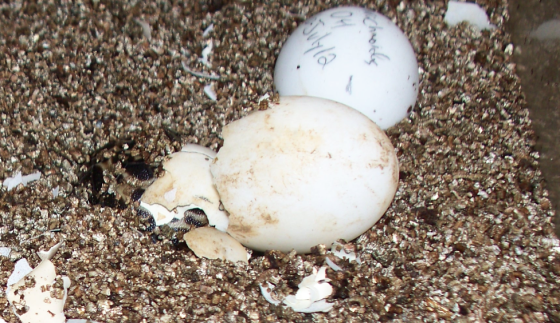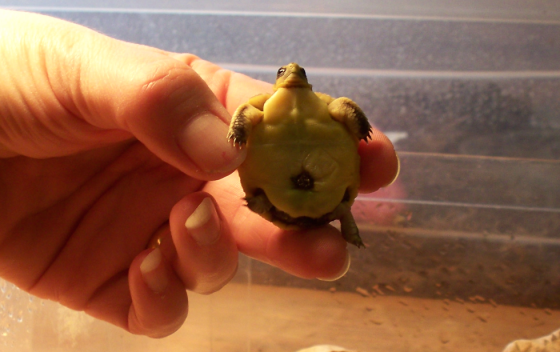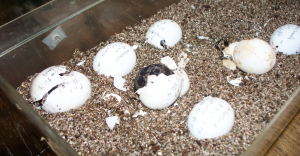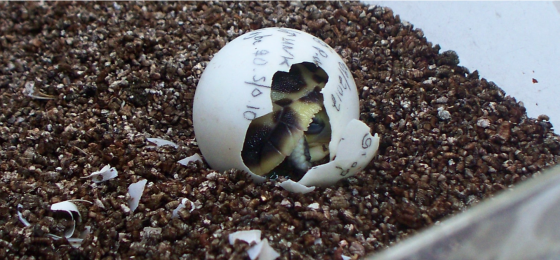This is my favorite time of year in the reptile department of my zoo. Spring is here, and that means one thing. When I come in on Wednesdays, I’m often greeted by sights like this:
(click on them to enlarge)
In this box, we have two different subspecies of Madagascan spider tortoise; Pyxis arachnoides arachnoides and Pyxis arachnoides brygooi. I can tell the difference from here. I’ll show you how.

P.a. brygooi like to burrow. They hatch, they burrow. P. a. arachnoides hang around on top of the substrate.
These babies are all genetically pretty valuable, as both species are critically endangered in their native Madagascar. Any successful hatching is significant, but sometimes some offspring are even more valuable to the program.
There’s someone I want to you meet, but allow me just a moment to tell you its story. When animals are taken out of the wild and reproduce, that next generation of offspring is known as F1. It’s not unusual for animals to reproduce in captivity after being removed from the wild. Tortoises, rhinos, cheetah, elephants. The real trick is in getting an F2, that next generation, one that is truly captive bred. F1 and F2. Sounds like a series of astromech droids, doesn’t it?
Now allow me to introduce you to our very first F2 Common Spider Tortoise.
A couple of days later, it emerged completely after having absorbed the last remaining bit of yolk. And lest we forget the gratuitous belly button shot:

It may take a few weeks for its umbilicus to disappear completely. Currently there are tiny wrinkles around its belly button where it is closing up.
It’s roughly the size of a quarter, the very first offspring of both parents. There are very few, if any, other F2 of this type anywhere in the world. I am so proud of my zoo and their dedicated staff for what they have done to perpetuate this species! Well done, Michael!






